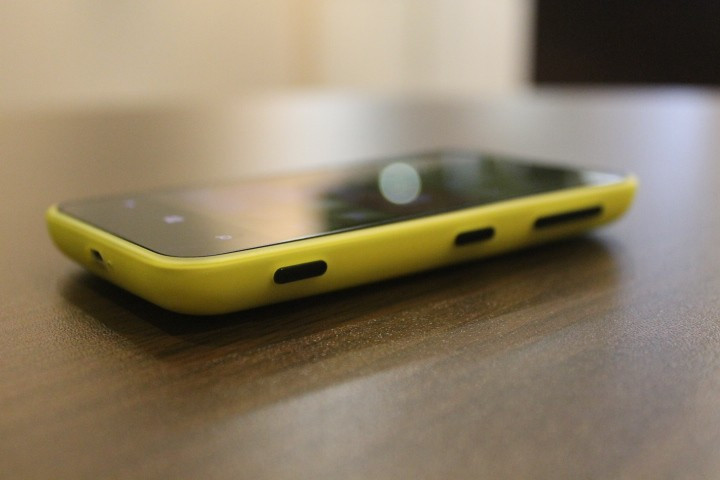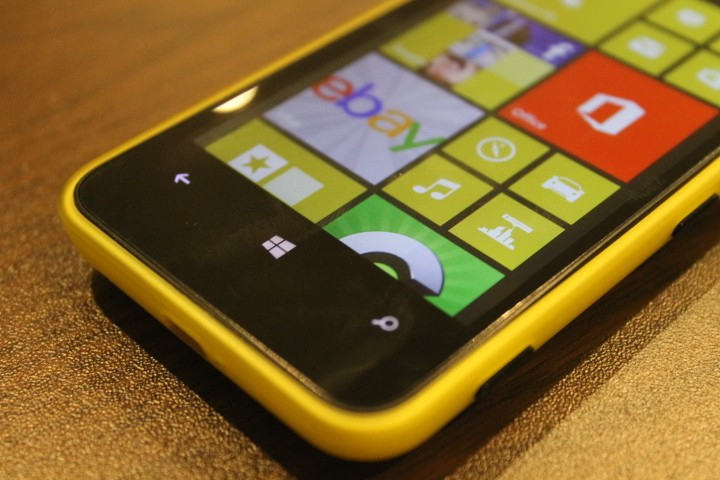Nokia Lumia 620 Review

Key Features
- Windows Phone 8
- 3.8in TFT display, 480 x 800 resolution, 246ppi
- 1GHz dual-core processor with 512MB RAM
- 5-megapixel camera with 720p HD video recording
- Price: £200 SIM-free
Introduction
The Windows Phone platform has had a limited range of hardware on which to run since it launched a couple of years ago. Most has been toward the top-end of the market, leaving those on a budget with little option but to stick with Android.
Mobile World Congress last week however offered a glimpse into what could become a budget revolution for Microsoft's platform. Not only bid Nokia reveal the £120 Lumia 520 but Huawei was showing off the Ascend W1 which go on sale with O2 in the UK for £1 less than the 520.
However for just £80 more can already get on the Window Phone ladder, in the shape of the Lumia 620.
Offering a budget alternative to the mid-range Lumia 820 and flagship Lumia 920, the Lumia 620 offers a relatively cheap entry price to the unique and colourful Windows Phone 8 operating system.
Priced at £200, the Lumia 620 is aimed at the lower end of the smartphone market, but keeps the bold and colourful hardware of Nokia's premium offerings, along with the same operating system and impressive suite of Nokia apps.
Hardware and Design
Taking inspiration from the equally bold and chunky Lumia 820 and 920, the smaller 620 has the same removable plastic shell as the 820 although thankfully it's easier to remove than it was with the mid-range Nokia.

At 127g the Lumia 620 is quite heavy considering its sub-iPhone 5 screen size, but it remains comfortable in your hand and unnoticeable in your pocket. It's not the thinnest smartphone around, measuring a portly 11mm, but if anything this extra bulk prevents it from slipping out of your hand.
My review unit had a yellow rear cover, which encases the entire back of the phone and wraps around the screen to create a thin, brightly coloured border - and of course the Windows Phone 8 operating system comes in matching yellow, although this can be altered if you prefer something more subtle.
Friends I've shown the 620 to described it - perhaps unfairly - as a toy phone, or 'My First Nokia', but I put that down to the bright yellow back and home screen; in black the phone would look as grown up and purposeful as its bigger siblings - and remember, that screen is larger than all but one model of iPhone, so it's not as small as it seems.
Whatever other complaints you could have with Nokia phones, build quality was very rarely one - and the Lumia 620 is no different. The phone feels tough and as if it would shrug off all but the heaviest knocks and drops.

The bright yellow back soon looks a bit grubby after living in a pocket full of loose change, but that can hardly be a complaint. On the outside at least, the 620 has lost none of the 820 and 920's premium feel, despite costing significantly less.
If yellow isn't for you, Nokia also sells the 620 in lime green, orange, magenta, cyan, white and black.
The Lumia 620 has just 8GB of internal storage - same as the 820 - but investing £15 in a 32GB microSD card will see this increased to something more usable.
Display
The Lumia 620 has a 3.8in touchscreen with a resolution of 480 x 800 and a pixel density of 256 pixels per inch (ppi). Surprisingly, the 620 has the same resolution as the larger and more expensive Lumia 820. The result is a higher pixel density, making text crisp and sharp, and means you can have as many tiles on the 620's home screen as on the 820.
Colour reproduction is excellent, and blacks are so deep that it's not always easy to spot when the screen ends and the black glass border starts.
Just like the Lumia 820 and 920, the smallest of the three boasts Synaptics technology, meaning you can operate the touchscreen while wearing gloves - something that is impossible on most other smartphones and tablets.
The glass-fronted 620 suffers from reflections and glare as much as other smartphones but the backlight does a good job of cancelling these out and can be turned up to almost uncomfortable levels of brightness; leaving it to automatically adjust posed no problems.
Operating System and Performance
The Nokia Lumia 820 is one of just a handful of smartphones on the market with the new Windows Phone 8 operating system, but where HTC has taken the safe route of delivering the software almost exactly as Microsoft intended, Nokia has included a suite of useful programmes, all grouped under the 'HERE' brand.
Here City Lens uses augmented reality to place the location of nearby shops, businesses and places of interest over the top of what the camera can see. Point the phone at a row of shops and the names appear, which can be tapped to bring up more information and contact details.
Here Drive Beta is essentially a Sat Nav programme, and although still in the beta phase, it serves as a very usable replacement to a stand-alone TomTom or Garmin device.

An added benefit of Drive Beta over some other sat nav apps is that you can download maps to use them offline, so the app will work abroad without incurring large data charges, and in areas with poor 3G coverage.
Maps have to be downloaded before you can use the app and England weighs in at around 200MB (plus another 4MB for the voice commands).
There's also Here Maps, which is basically the same as the company's recently launched maps app for the web and iOS. Maps has 3D buildings, indoor maps to help find your way around shopping centres, and directions for walking and public transport.
Finally, there's Nokia Music, with more than 15 million tracks for sale, priced between 59p and 99p and access to Mix Radio, serving up dozens of music streams catalogued by genre, age and the current charts; streams can be played over W-Fi, or downloaded to play offline.

The Lumia 620 is powered by a 1GHz dual-core processor with just 512MB of RAM. The design, screen and software may have kept up with more expensive handsets, but it's when you look at the processor that you are reminded of the 620's budget intentions.
To it's credit, Windows Phone 8 still works excellently on the low-power processor; taps and gestures are dealt with instantly while multitasking is handled efficiently.
Sadly, as with all Windows Phone 8 devices, the dreaded 'Resuming...' screen interrupts opening applications more often than it should and the glaring lack of a notification centre must still be causing Microsoft some discomfort.
WP8 is improving though, and since its launch in October last year the application store has grown to 130,000 apps, and earlier this week the ageing and frankly terrible Twitter application was updated and much improved.
Making the jump from iOS or Android to Windows Phone is still a difficult one, but the updated Twitter and recent inclusion of Spotify shows promise. With a bit of patience I expect the operating system to continue to grow into something worth investing into.
All Windows Phone 8 Nokias I've seen so far have had good battery life, and the Lumia 620 is no exception, easily getting me through a full day of regular use, with an email account on push, Wi-Fi on all day and the screen set to automatic brightness. A second full day would be a struggle, but the 620 performed significantly better than the BlackBerry Z10.
Camera
The camera on the Lumia 620 features a five megapixel sensor with autofocus and LED flash. While the sensor size won't match the top end smartphones, the presence of autofocus and flash are a nice addition on a phone of this price point.,
On the rear you will find a VGA quality camera for video calls.
Compared to the PureView technology of the Lumia 920 and Carl Zeiss lens of the 820, naturally the 620's camera isn't much to write home about. It's good enough for a quick snap in bright natural light, but viewing the photos it produces on anything larger than the phone's screen shows noise in dark areas, a tendency to make whites slightly green, and the zoom lowers quality dramatically.
The camera app is identical to that used by all other WP8 phones, so you can adjust the exposure, white balance and ISO, and pick from half a dozen preset scenes to get the best out of those five megapixels.
Verdict
I was pleasantly surprised by the Lumia 620. I had expected it to be the Lumia no one should bother with when the 820 and 920, albeit more expensive, are excellent phones, but I've been proved wrong.
The 620 has the same impressive build quality and unique design that can be as bold-and-colourful or plain-and-subdued as you like, the same screen resolution as the 820, and the same suite of Nokia's Here apps.
With a growing application store Windows Phone 8 is getting better by the day, and even though the processor sounds a bit weak, I found it to be more than capable in most situations. It might look a bit like a toy compared to the industrial iPhone 5 and BlackBerry Z10, but I like how Nokia is continuing to make itself stand out from the monochrome competition.
Scores:
- Screen: 8/10
- Design: 8/10
- Build Quality: 8/10
- Software: 7/10
- Camera: 6/10
- Overall: 7/10
The Good:
- Great screen, despite being smaller than most
- Strong build quality
- Striking, unique design
The Bad:
- Windows Phone 8 still lacking some features and performance
- Camera is average at best
- Some may not like extra thickness and weight
Must Read:
Sample camera shots:


© Copyright IBTimes 2025. All rights reserved.




















